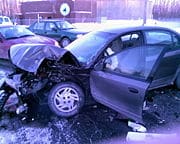How Is Negligence Determined?

Each of us, whether in the operation of a car, in our work activities, or in just simply going about the tasks of everyday life, owes each of our fellow citizens an obligation to conduct ourselves in a way that will not harm them, or created an unreasonable risk of harm for them. As Attorney Eric T. Kirk will tell you.
Baltimore Injury Lawyers Tip: “When a person’s conduct runs afoul of that obligation, the law considers this a “breach” of that requirement.”
The duty owed is one of reasonable care and prudence, but it is not fixed. The duty owed will vary depending on the attendant circumstances, as well as the level of skill, age and experience of the individual owing the duty. The law requires each of us to act reasonably under the circumstances, whatever those may be.

Maryland law defines negligence as the failure to use reasonable care under the circumstances, resulting in harm to another. In Baltimore personal injury litigation, negligence is established by showing that the defendant owed a duty, breached that duty, and caused damages.
Seems obvious, but, a driver weaving through traffic on the Jones Falls Expressway at 70 miles per hour when the posted limit is 50 is almost certainly breaching the duty of reasonable care. Excessive speed on congested Baltimore highways greatly increases the risk of collisions and injuries.
Again hitting the easy examples. Texting while approaching a crosswalk in a busy neighborhood like Fells Point is a classic form of negligence. Maryland statutes generally prohibit handheld device use while driving. Striking a pedestrian in these circumstances would be a foreseeable result of negligent conduct.
A business owner who neglects to clear dangerous conditions from the front steps of a restaurant during winter creates an unreasonable hazard. Maryland premises liability law requires landowners to maintain reasonably safe conditions for invitees.
Negligence law does not make people insurers of others’ safety. If the actor used reasonable care under the circumstances, liability does not attach — even if someone was injured. Here are five illustrative examples. Every case is unique, and you should consult with a seasoned Baltimore accident attorney prior to making any decisions.
If a driver is traveling the posted 30 mph during light fog, and a deer suddenly, and inexplicably bolts across the lanes, a collision may be unavoidable. Unless the driver was otherwise careless, this is not typical negligence, and the driver may successfully argue it was an “emergency“.
If a patron in a Baltimore supermarket spills a soda seconds before another customer slips, the store likely had no reasonable opportunity to discover and fix the hazard. Maryland courts recognize that property owners are not liable for hazards they had no notice of- a classic argument raised by Insurance defense lawyers.
The word “solely is important. If a properly maintained car suffers a sudden, unforeseeable brake failure, the driver may not be negligent. Courts often distinguish between preventable maintenance failures (negligent) and mechanical defects that occur without warning despite reasonable care.
The violation of a statue [e.g. cannot switch lanes until safe to do so] can constitute evidence of a breach, and, accordingly, of negligence. The argument here is that the wording of the statute constitutes the nature of the duty. If the injury victim is a member of the group intended to be protected by the statute, and the injury is of the type the statute was drafted to prevent, then a violation of that statute., i.e. a “breach” of the statutory requirement, that causes injury is evidence that negligence has occurred.



